Delta joined groundskeeper René Hoonhout and eco-policy developer Tim Tabak, together with nature expert Gerard Kuit in a guided bird-spotting tour of the Hammenpoort.
The group, led by Gerard Kuit (second from right), scans the area for wildlife of the feathered variety. (Photo: Oscar Greenwell)
TU Delft has been working towards creating the EcoCampus, an eco-friendly, sustainable campus for students and staff. The Hammenpoort is just one part of this undertaking. Perhaps you’ve noticed the ‘bee hotels’ erected around campus, for example.
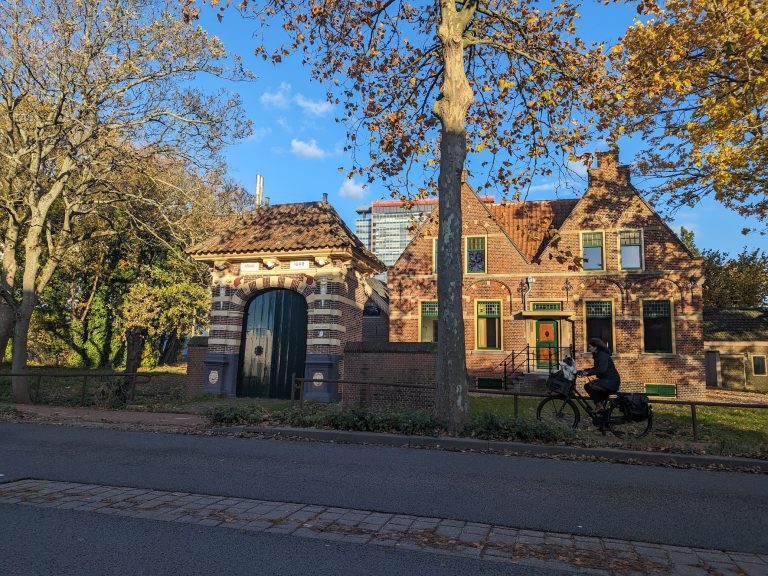

The bird is the word
It is a rather dreary overcast day when Delta joins a guided bird-spotting tour of the Hammenpoort, led by groundskeeper René Hoonhout, eco-policy developer Tim Tabak and nature expert Gerard Kuit. Three groups of undeterred Dutch and international students have shown up. While walking through the wooded area they are surrounded by the sounds of chirping coming out of the trees.
‘Often you can hear birds before you see them’
Tabak gushes over the advantages of the space, which is about the size of three football pitches. “The variation in height and the variation of dry and wet areas allow for a relatively small plot to be very diverse, so you can attract a lot of species that are dependent on different types of biotopes.”
Kuit puts his ornithology expertise to use, and his group manages to spot a woodpecker and even a kingfisher with his help recognising bird calls. “Often you can hear birds before you see them” he says.
In total, the three tour groups manage to observe a whopping 24 unique bird species on just the small plot. Elise, one of the less ornithologically knowledgeable participants, however remarks that to her there are “only ducks in the water, and ducks in the air”.
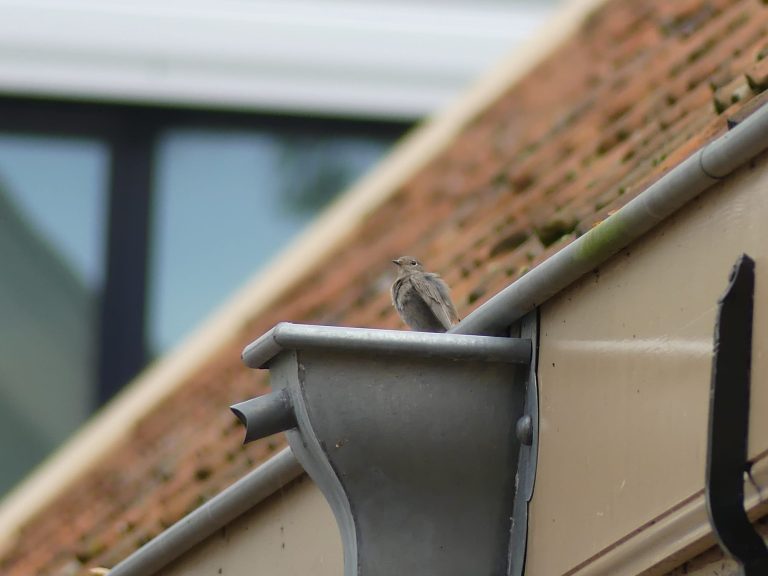

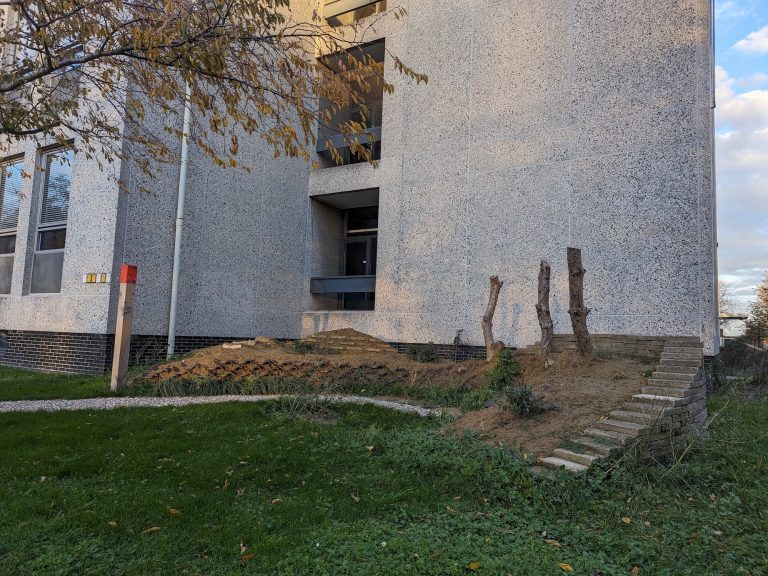

Observe and report
Improving biodiversity and quality-of-life is part of TU Delft’s sustainability plans to be CO2 neutral, climate-adaptive and circular by 2030. It has been working towards creating the EcoCampus, an eco-friendly, sustainable campus for students and staff. The Hammenpoort is just one part of this undertaking. ‘Bee hotels’ erected around campus, are another.
‘We are moving towards a nature-inclusive way of management’
René Hoonhout chimes in: “We are moving towards a nature-inclusive way of management. By making observations like today, we can measure whether this helps improve biodiversity.”
In fact, on 22 May 2023, TU Delft introduced its collaboration with the Waarneming (in Dutch) platform, the largest nature platform in the Netherlands and part of the Observation International Foundation. With the latter’s ObsIdentify app, participants can easily identify and record flora and fauna anywhere. The observations are automatically published on the website.
TU Delft has a goal to observe 1,000 unique species of flora and fauna on the campus within one year. “We’re at 75% right now,” Tabak says proudly. TU Delft staff and students have been encouraged to engage in ‘citizen science’ and discover as many wildlife species as possible on campus.


If you build it, they will come
TU Delft has set a goal of 16 species that fall under its new biodiversity action plan. These species dictate the way it designs the landscapes, buildings, and other facilities. Tabak explains “we want to design them in a way that they contribute to the living environment of these species”.
‘The wildlife that is dying out is part of our heritage’
For example, one of these species is the humble sparrow, which has been dying out in urban areas. As the groups walk through the Hammenpoort Tabak elaborates. “If you consider the house sparrow, they need nesting sites in buildings, but they also need a scrub layer, water, and places where they can take a sand bath.” If areas that include the required ‘amenities’ for these animals are created, you will start seeing them around campus.
‘But, what does biodiversity do for me?’ you may selfishly ask. Tabak explains that the wildlife that is dying out is part of our heritage, and that is in itself a reason we should try to conserve it.
But of course the positives don’t end there. Tabak sums them up: biodiversity helps us become more resilient to climate change. Also, there are ‘services’ the ecosystem provides for us like pollination and filtering the air and water. It has also been proven to improve people’s mental health. It invites people to get out and move around, which has a positive influence on even our physical well-being.


- If you would like to help in the creation of the EcoCampus and engage in some citizen science, you can download the ObsIdentify app.
English only
Perhaps you’ve cycled by the Hammenpoort on Rotterdamseweg for years, wondering what goes on behind those gates. The Hammenpoort is a plot of land that originally belonged to a group of farmers who, decades ago, made a deal with TU Delft that they could remain toiling their plot of land until they passed away.
From manure to verdure
During this time, TU Delft expanded all around the plot, and the amount of greenery decreased across the surrounding area, leaving it a verdant island in a sea of concrete. Inevitably, the owners did pass away.
However, TU Delft saw value in the former farmland, and decided to put it to use: not for grazing livestock, but as a park that can foster biodiversity on campus, and as a safe haven for species that are having a rough time due to urbanisation.
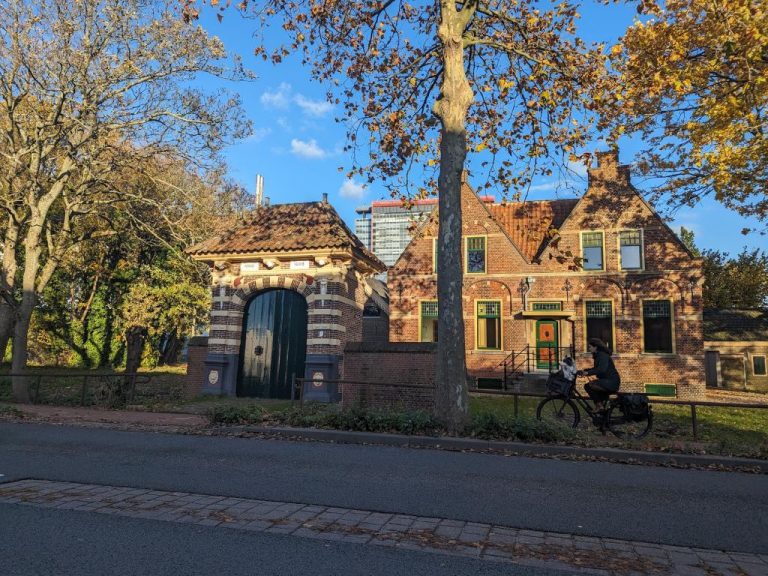

The unassuming gates of the old, perhaps slightly haunted-looking farmhouse building. (Photo: Oscar Greenwell)
The bird is the word
It is a rather dreary overcast day when Delta joins a guided bird-spotting tour of the Hammenpoort, led by groundskeeper René Hoonhout, eco-policy developer Tim Tabak and nature expert Gerard Kuit. Three groups of undeterred Dutch and international students showed up over the course of the day. While the current group walks through the wooded area they are surrounded by the sounds of chirping coming out of the foliage.
‘Often you can hear birds before you see them’
Tabak gushes over the advantages of the space, which is about the size of three football pitches. “The variation in height and the variation of dry and wet areas allow for a relatively small plot to be very diverse, so you can attract a lot of species that are dependent on different types of biotopes.”
Kuit puts his ornithology expertise to use, and the group manages to spot a woodpecker and even a kingfisher with his help recognising bird calls. “Often you can hear birds before you see them” he says.
In total, the three tour groups manage to observe a whopping 24 unique bird species on just the small plot. Elise, one of the less ornithologically knowledgeable participants, however remarks that to her there are “only ducks in the water, and ducks in the air”.
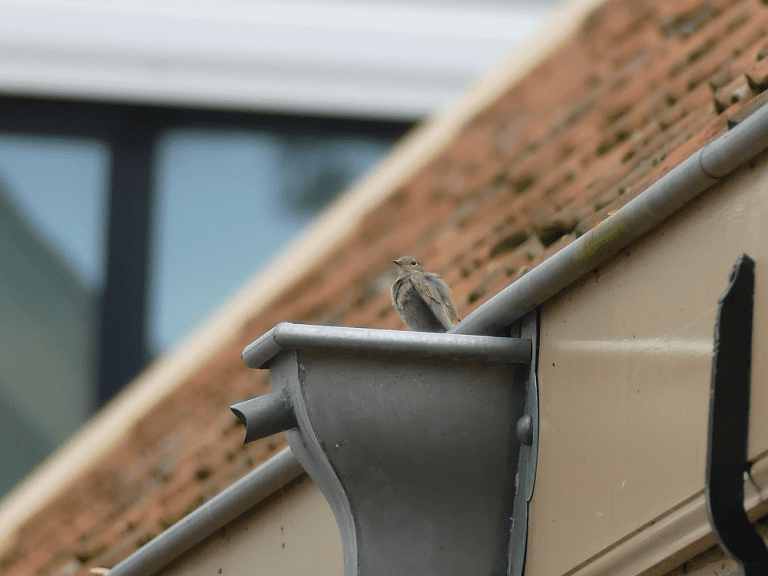

A female black redstart ‘human-spotting’ from atop the Hammenpoort farmhouse. (Photo: Niels Zonneveld)


The ‘Ambeetheatre’, one of the larger bee-hotels, a dwelling for solitary bees placed in the centre of campus. (Photo: Oscar Greenwell)
Observe and report
Improving biodiversity and quality-of-life is part of TU Delft’s sustainability plans to be CO2 neutral, climate-adaptive and circular by 2030. It has been working towards creating the EcoCampus, an eco-friendly, sustainable campus for students and staff. The Hammenpoort is just one part of this undertaking. ‘Bee hotels’ erected around campus, are another.
‘We are moving towards a nature-inclusive way of management’
René Hoonhout chimes in: “We are moving towards a nature-inclusive way of management. By making observations like today, we can measure whether this helps improve biodiversity.”
In fact, on 22 May 2023, TU Delft introduced its collaboration with the Waarneming (in Dutch) platform, the largest nature platform in the Netherlands and part of the Observation International Foundation. With the latter’s ObsIdentify app, participants can easily identify and record flora and fauna anywhere. The observations are automatically published on the website.
TU Delft has a goal to observe 1,000 unique species of flora and fauna on the campus within one year. “We’re at 75% right now,” Tabak says proudly. TU Delft staff and students have been encouraged to engage in ‘citizen science’ and discover as many wildlife species as possible on campus.
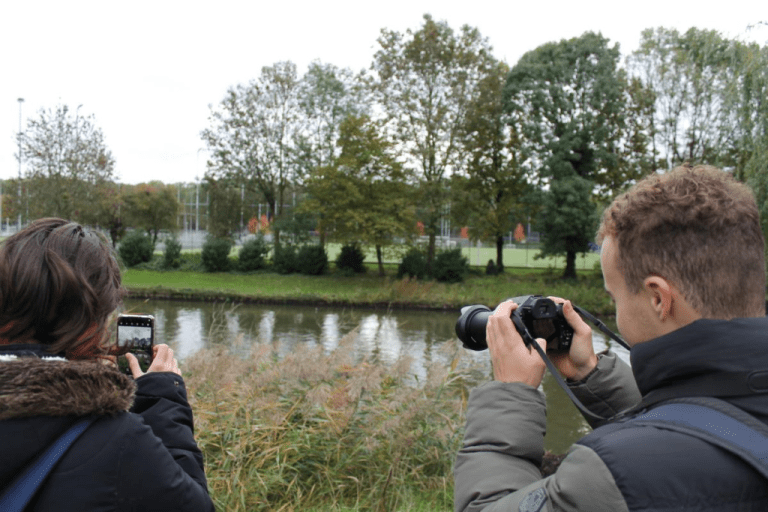

One attendee trying out the Obsidentify app on some local wildlife, the other takes snaps with a traditional camera. (Photo: Oscar Greenwell)
If you build it, they will come
TU Delft has set a goal of 16 species that fall under its new biodiversity action plan. These species dictate the way it designs the landscapes, buildings, and other facilities. Tabak explains “we want to design them in a way that they contribute to the living environment of these species”.
‘The wildlife that is dying out is part of our heritage’
For example, one of these species is the humble sparrow, which has been dying out in urban areas. As the group walks through the Hammenpoort Tabak elaborates. “If you consider the house sparrow, they need nesting sites in buildings, but they also need a scrub layer, water, and places where they can take a sand bath.” If areas that include the required ‘amenities’ for these animals are created, you will start seeing them around campus.
‘But, what does biodiversity do for me?’ you may selfishly ask. Tabak explains that the wildlife that is dying out is part of our heritage, and that is in itself a reason we should try to conserve it.
But of course the positives don’t end there. Tabak sums them up: biodiversity helps us become more resilient to climate change. Also, there are ‘services’ the ecosystem provides for us like pollination and filtering the air and water. Furthermore, it has been proven to improve people’s mental health. It invites people to get out and move around, which has a positive influence on even our physical well-being.


Some Gadwall, a duck species, enjoying a dip around the Hammenpoort. (Photo: Niels Zonneveld)
- If you would like to help in the creation of the EcoCampus and engage in some citizen science, you can download the ObsIdentify app.
Oscar Greenwell / Editor


Comments are closed.